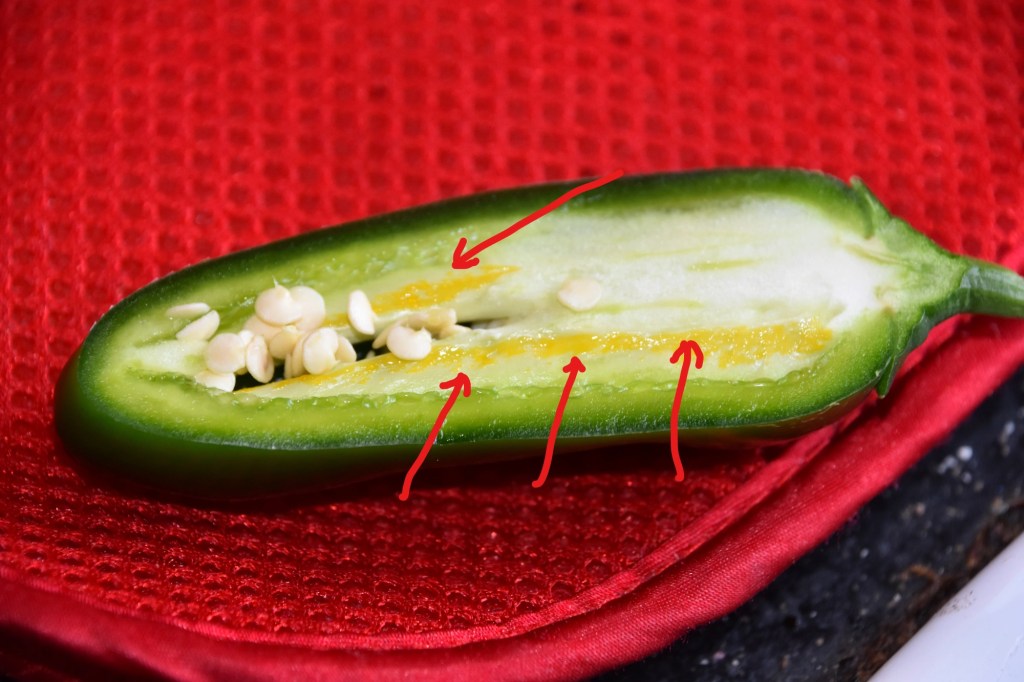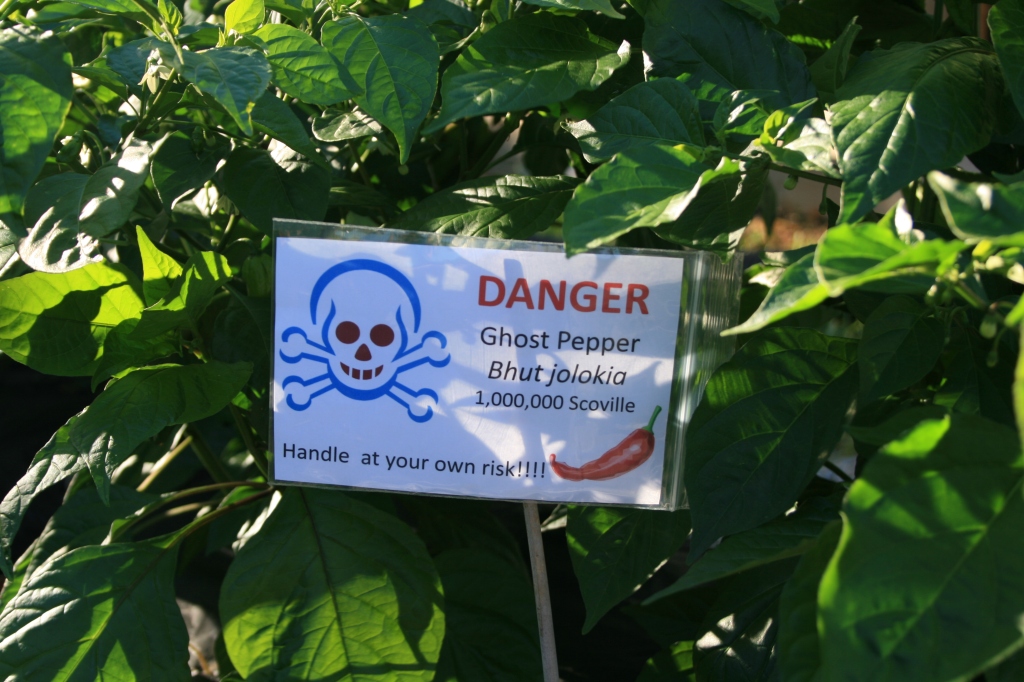Hot peppers, also known as “chili” or more appropriately chile peppers, are popular and used in cuisines around the world. The heat of hot peppers comes from capsaicin, from a group of chemicals called capsaicinoids. Capsaicin is found in the highest concentrations in glands on the surface of the pepper’s placenta, which is the part of the fruit that connects the seeds to the rest of the plant. When a pepper is cut or bitten, the capsaicin is released and come into contact with the pain receptors in the mouth and throat.

Capsaicin works by stimulating pain receptors in the mouth and throat, creating a burning sensation that is commonly associated with spicy foods.
The amount of capsaicin compounds in a hot pepper varies depending on the species, the growing conditions, and the ripeness of the fruit. And it’s no surprise, the hotter the pepper, the higher the concentration of capsaicin. The level of heat in a hot pepper is measured on the Scoville scale, which ranges from zero (think bell pepper) to over two million (Carolina Reaper).

Interestingly, capsaicin is not produced by the pepper plant for the purpose of making food spicy hot. They are a defense mechanism against herbivore predation. Capsaicin is also toxic to some insects and fungi. Interestingly capsaicin does not affect birds, which are the primary dispersers of pepper seeds. Birds do not have the same pain receptors as mammals, so they are not affected by the heat of the peppers and capsaicin is added to bird seed mixtures to deter squirrels and other seed stealers.
Capsaicin has been found to have a number of health benefits, including pain relief, improved digestion, and reduced inflammation. Some topical creams and ointments have added capsaicin to their formulations for the pain-relieving properties, and they have been shown to help with conditions such as arthritis and nerve pain. I have used these formulations for knee pain, at one time to an excess that resulted in my nerves continuingly firing and creating more pain. Always follow label instructions.


